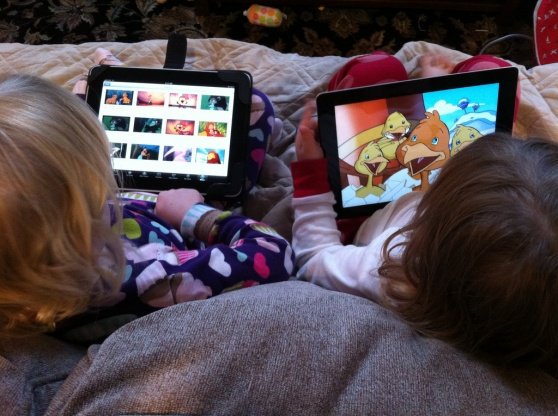The NPD Group says in their latest report that portable and console video game systems continue to have the highest usage levels among kids ages 4-14. However, the Kids and Consumer Electronics: 2012 Edition report noted that media tablets experienced the highest increase in usage at 13 percent in 2012 compared to only 3 percent in 2011.
The study noted that while usage of the more sophisticated devices such as computers and game devices tend to increase as kids get older, tablet usage is highest among younger children, emphasizing the importance of manufacturers to making their devices easy to use. Households with kids ages 4 – 14 own an average of 10 different devices, with kids using an average of five of those devices.
“Kids are using tablets to game, watch movies and TV shows, read books and listen to music-even occasionally for taking pictures- so they have embraced the utility of these devices quite rapidly,” said Russ Crupnick, senior vice president, industry analysis for The NPD Group. “Older kids also use the tablets for social media and communication, which squarely places these devices at the center for discovery and evangelism of new services and applications, as well as for brands and entertainment of all sorts.”

Televisions, computers and cell/smartphones have the highest household ownership, while PDMPs saw the largest drop in household ownership with just 35 percent owning these devices in 2012 compared to 48 percent in 2011. Household ownership of console and portable console systems, media tablets, and digital video cameras saw the most significant increases.
Portable console systems are the most popular devices owned by kids ages 4-14, with six years-old being the average age of adoption, slightly younger than 2011 where the average age was 6.4. Gaming systems and portable entertainment devices remain on top the list of devices for which kids will have the most influence on future device selection, where the type of technology and features offered by a new device is nearly as important as low price and good value; parents tend to be influenced more often by brand reputation, low price, safety aspect and educational value, whereas children are more focused on aesthetics, popularity and entertainment value.

